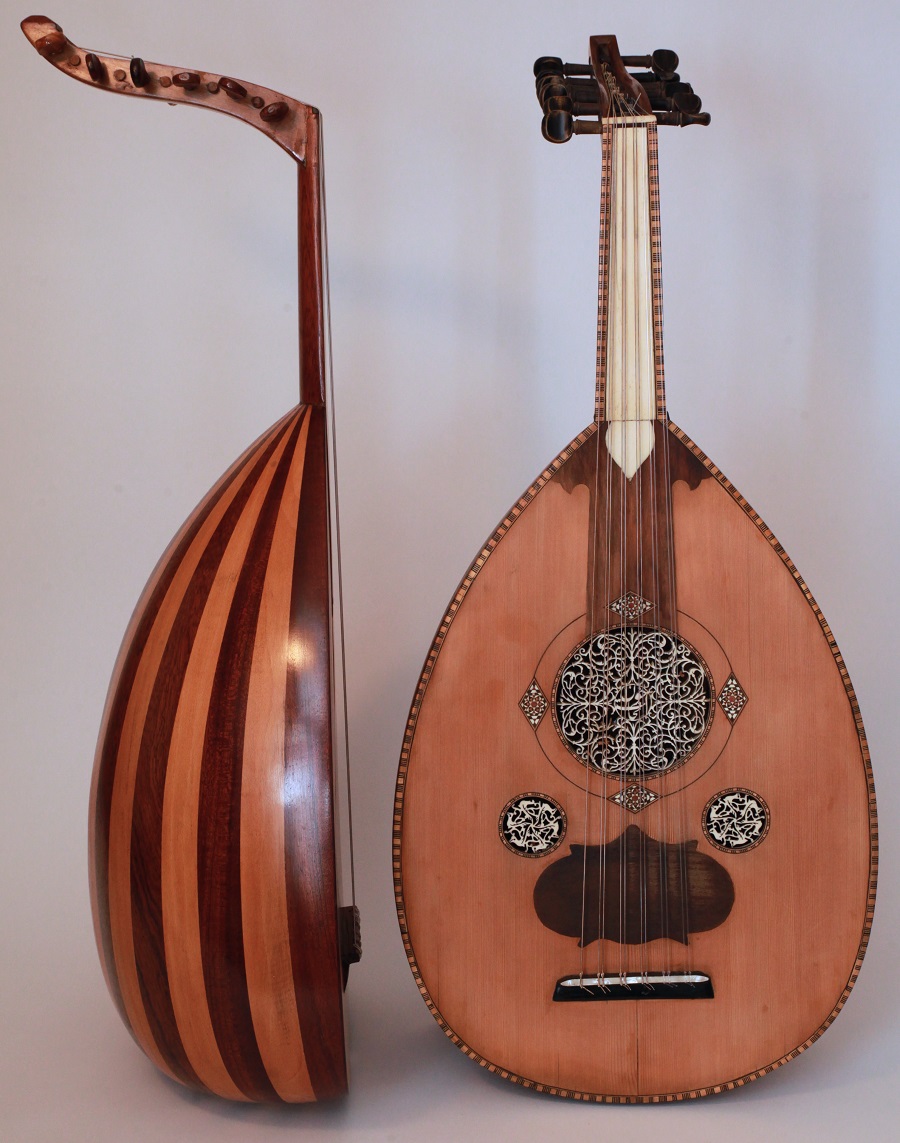 Syrian oud made by Nahat Brothers (right) and Iraqi oud made by Muhammad Fadil (left). © 2018 MaqamWorld
Syrian oud made by Nahat Brothers (right) and Iraqi oud made by Muhammad Fadil (left). © 2018 MaqamWorld
The Oud (also spelled ‘Ud) is one of the most popular instruments in Arabic music. Its name means "a thin strip of wood" in Arabic, and this refers to the strips of wood used in making its pear-shaped body. The neck of the oud is short in comparison to its body and has no frets. This allows the oud to achieve excellent intonation and makes it ideal for performing the Arabic maqamat.
The oud usually has 5 pairs of strings tuned in unison and a single bass string, although some ouds have one extra pair. The most common tuning (low to high) is C, F, A, D, G, C, which makes all intervals (except F to A) perfect fourths. Strings were historically made of animal gut, and were plucked with a plectrum known as risha (Arabic for feather). Modern strings are made of steel wound over nylon, and modern risha-s are made of plastic, tortoise shell, animal horn or even bamboo.
The oud has a warm timbre and a wide tonal range (about 3 octaves), and can convey the melody and rhythm equally well because it is percussive. This makes is perfectly suited to accompany a singer. It is also the composers' favorite instrument for writing a new melody. Oud taqasim are also very popular in live concerts as well as recordings.
The Arabic oud is broadly the same instrument that exists in many other countries in the region (e.g. Turkey, Greece, Iran) with minor differences in dimensions, style and timbre. The European "lute" is a descendant of the oud, from which it takes its name (al-oud).
Explore other traditional instruments: